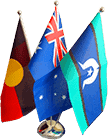
by Julie McCrossin, North Eastern Melbourne Integrated Cancer Service, 8 September 2020
Julie McCrossin is a freelance journalist and facilitator. Julie is a former broadcaster with 20 years experience working for ABC Radio National, ABC TV and Network Ten. In 2013, she was diagnosed with stage 4 HPV-related oropharyngeal cancer. She is an Ambassador for Beyond Five, Targeting Cancer and TROG Cancer Research, and was awarded a Member of the Order of Australia for significant service to the community in 2019.
My traumatic experience of insufficient preparation for the immobilisation mask used in my radiation treatment started me on a journey of providing easily accessible, evidence-based information to help other head and neck cancer patients and their families survive physically and emotionally as best they could.
I reached out to clinical multidisciplinary team members to work in partnership. I also approached other patients. It opened my eyes to the multiple challenges faced by head and neck cancer patients. [The majority of] patient groups focus on peer support and peer education. They want their support and information from peers. I’m a little bit different. Both my brothers are medical specialists; my father was an orthodontist, my daughter is a doctor. Many of my friends are doctors. As a patient, I wanted to hear from the most qualified clinicians who were having the highest volume of patients like me. The evidence is that if you want to survive cancer you go to a treatment centre that has a specialist in your field and that has a high volume of patients.
My view is that we need both [peer and clinician resources] in the patient survival community. We need peer support and we need access to expert information. In this series of 16 videos, I brought together a group of multidisciplinary team members. You only survive a head and neck cancer if you have multidisciplinary care. Our symptoms get worse at five years and beyond; the time when most cancer patients have less symptoms. We need multidisciplinary information and support throughout our survivorship; really [for] the rest of our lives.
I sat down and interviewed 16 people with demonstrated expertise in every aspect of treatment and care, focusing on innovation and improving quality of life. I’ve incorporated patients as well, telling their relevant stories and asking their questions. The videos range in length from 9 minutes to 44 minutes. We have had over 4,000 viewers and they have viewed them for over 30 hours. In other words, people are going to these videos and staying to watch for a considerable period of time.
We have also made over 25 key snapshots, which are the key messages from the interviews. They are 30 seconds to 4 minutes long and we have circulated them on Facebook, Instagram, LinkedIn and Twitter. We’ve had 23,000 views. They were only released 27 July [World Head and Neck Cancer Day].
In the videos, when we talk about innovations in surgery we’ve gone into an operating theatre with the latest robotic surgery that is used for head and neck cancers. I interview the surgeon, the speech pathologist and the dietitian who works with surgical patients. For radiation therapy, we are in a bunker with one of the latest LINAC (Linear Accelerator). With the radiation oncologist, they are there with a mask so they can explain what it is for. So, a lot of this education is visual. A lot of head and neck treatment is so bizarre and to some degrees so frightening, it is like an episode of Doctor Who. You have to see it to believe it.
I told myself that if I survived [my cancer] I would show people what happened [during treatment], so other people who get these cancers have at least seen it before. We’ve now seen women with double mastectomies; we know what it looks like. I want people to see the mask, the radiation therapy machine, the survivors with facial disfigurement. That is a very harsh term, ‘facial disfigurement’, but some people have the story of their surgery on their faces. We don’t see those people, they tend to hide. I’m trying to demystify and make it less frightening by [providing] hope-filled, evidence-based information and meeting people.
See the videos here: https://headneckcancerforum.com/
This article is based on an interview transcript. It has been edited for clarity.
Pictured cake made by the head and neck radiation oncology specialist, Dr Tsien Fua, for the 2020 Linac Bake Off.
Originally published: https://www.nemics.org.au/page/Improving_cancer_care/summits/headneck/#mccrossin1
